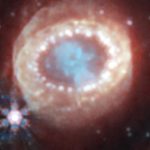Key Takeaways:
- Laniakea Supercluster: Recent scientific mapping of approximately 8,000 galaxies unveiled the Laniakea supercluster, reshaping our understanding of the cosmic landscape.
- Cosmic Dimensions: The Milky Way, once considered significant, is now acknowledged as a minute entity within the vast Laniakea supercluster, which spans an impressive 500 million light-years in diameter.
- Revolutionary Mapping Technique: Researchers in Hawaii developed an innovative technique to map the Universe by tracking the flow of galaxies, providing a clearer understanding of our position in the cosmic expanse.
- Galactic Interaction: The detailed map showcases the Milky Way’s intricate gravitational dance with the Virgo cluster and around 100,000 other galaxies, shedding light on the complex interactions within our cosmic neighborhood.
- Limitless Universe: The new cosmic map emphasizes the incomprehensible scale of the observable universe, estimated to span around 90 billion light-years, underscoring the vastness and complexity of the cosmos.
In the vast tapestry of the universe, our home galaxy, the Milky Way, is a mere speck. Recent revelations have emerged from the meticulous mapping of approximately 8,000 galaxies, fundamentally altering our perception of the cosmic landscape. This groundbreaking study has led to the identification of the Laniakea supercluster, a colossal structure that redefines our understanding of cosmic architecture.
Derived from the Hawaiian words meaning “immeasurable heaven,” Laniakea stands as a testament to the unimaginable scale of the cosmos. Unlike previous challenges in defining supercluster boundaries, a team of researchers in Hawaii devised an innovative technique. By mapping the flow of galaxies in space, they achieved a precise delineation of our position within the cosmic sea of galaxies.
Published in the journal Nature, the findings position the Milky Way near the periphery of the Laniakea supercluster. This colossal structure spans an astonishing 500 million light-years in diameter and comprises approximately 100,000 galaxies. To put this in perspective, the entirety of the visible universe extends over an estimated 90 billion light-years.
The highly detailed cosmic map unravels a cosmic ballet involving the Milky Way, the Virgo cluster, and a multitude of other galaxies. The gravitational interplay between these celestial entities allows scientists to discern the intricate dynamics of our cosmic neighborhood. The galaxies, including our own, engage in a gravitational tango, unveiling the structural intricacies of the Laniakea supercluster.
As observers, we are offered a glimpse of this cosmic dance through Nature’s video presentation, showcasing the profound interconnectedness of galaxies within Laniakea. The revolutionary mapping technique not only defines our supercluster but also underscores the symbiotic relationships that govern the vastness of the cosmic expanse.
In essence, the Milky Way’s relegation to a cosmic insignificance highlights the grandeur of Laniakea. This newfound understanding of our position within the supercluster prompts contemplation of the limitless wonders and complexities that continue to define our exploration of the universe.
As we peer into the cosmic tapestry, the revelation of Laniakea serves as a beacon, guiding our comprehension of the vast and intricate web of galaxies that extends far beyond our previous cosmic boundaries.


